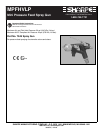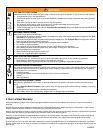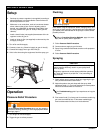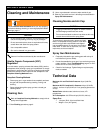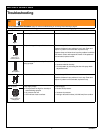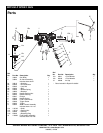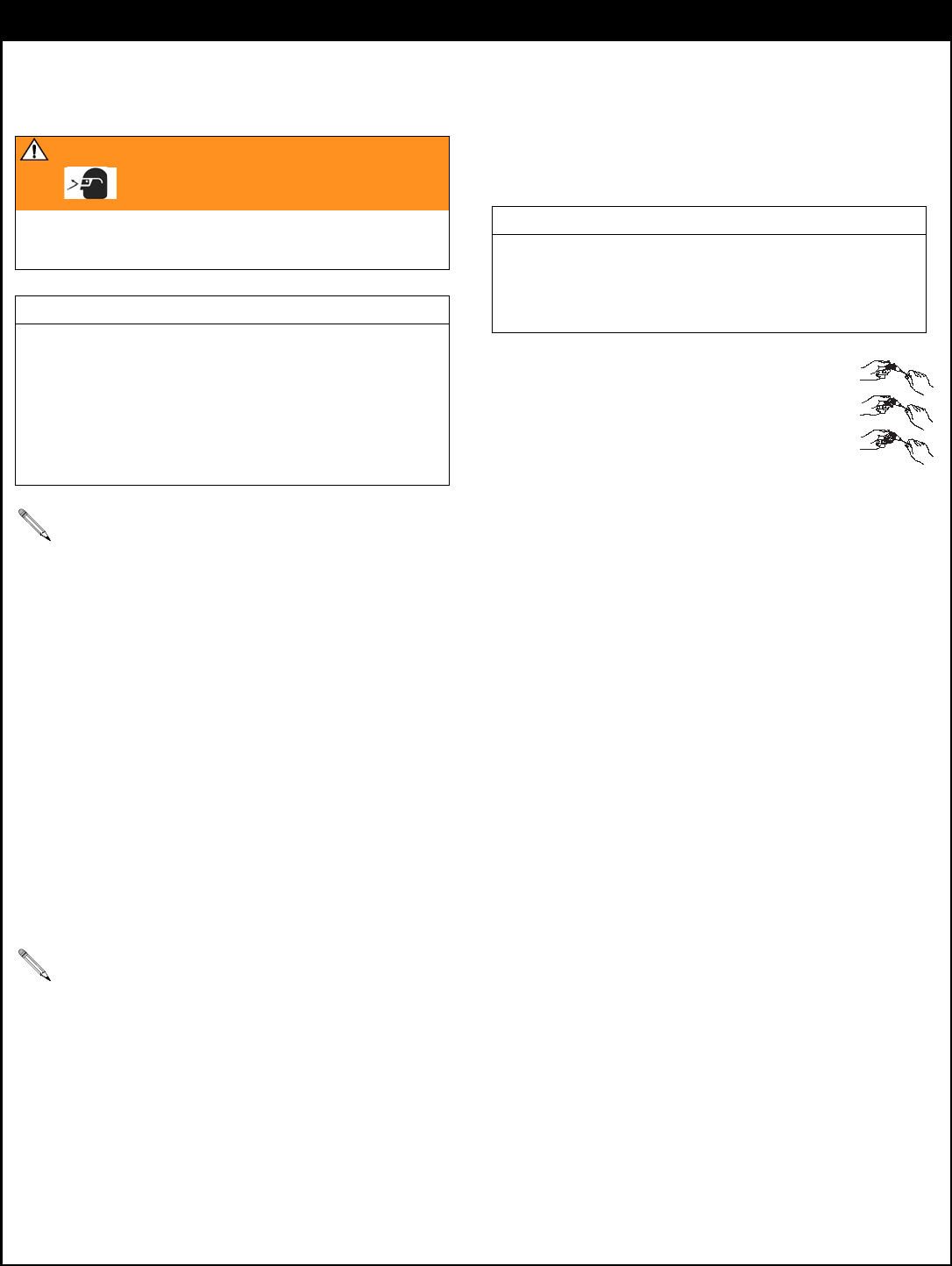
4 309990C
MPFHVLP SPRAY GUN
Cleaning and Maintenance
Volatile Organic Compounds (VOC)
Regulation
In certain states, spraying solvents that release VOC’s into the
atmosphere when cleaning a spray gun is prohibited. To comply
with these air quality laws you must use a cleaning method that
prevents the escape of VOC vapors into the atmosphere. See
Compliant Cleaning Methods below.
Compliant Cleaning Methods
• Place spray gun in a gun washer that completely encloses
the gun and components during cleaning, rinsing, and
draining.
• Spray solvent through the spray gun into a closed gun
cleaning station.
Cleaning Gun
1. Follow Flushing procedure, page 3.
2. Use a rag moistened in solvent to wipe outside of gun.
3. Blow dry gun inside and out. Lubricate gun as described in
Spray Gun Maintenance.
Cleaning Nozzle and Air Cap
To clean the air cap and nozzle, remove and soak
them in a compatible cleaning solution. Clean them
and front of gun with a soft-bristle brush dipped
into compatible solvent. Do not use a wire brush or
metal tools. To clean out air cap holes, use a soft
implement, such as a toothpick.
Spray Gun Maintenance
• Frequently lubricate the gun moving parts with a drop of
non-silicone oil (part no. 8255).
• Do not disassemble the spray gun if you are having a spray
pattern problem. Check Troubleshooting, page 5, for infor-
mation on how to correct the problem.
• Check for fluid leakage. Tighten fittings or replace equip-
ment as needed.
Technical Data
Maximum Air and Fluid Inlet Pressure: 50 psi (345 kPa,
3.4 bar)
Maximum HVLP Compliant Air Pressure: 40 psi (276 kPa,
2.8 bar) - delivers 10 psi (69 kPa, 0.7 bar) spraying pressure at
air cap
Wetted Parts: stainless steel, aluminum, brass, L/D
polyethylene
Air Consumption: 3.5 CFM at 40 psi (276 kPa, 2.8 bar)
Spray Gun
• 1/4 npsm (R1/4-19) air and fluid inlets
• Weight - 8 oz. (227 grams)
WARNING
Follow Pressure Relief Procedure when you stop spraying
and before cleaning, checking, or servicing equipment. Read
warnings, page 2.
CAUTION
• Do not submerge gun in solvent. Solvent dissolves lubri-
cant, dries out packings, and may clog air passages.
• Do not use metal tools to clean air cap holes as this may
scratch them and distort the spray pattern.
• Use a compatible solvent.
• Gun can be cleaned in a gun washer.
Clean air line filters as directed by the manufacturer.
Refer to Compliant Cleaning Methods to comply with air
quality laws if applicable.
CAUTION
• Trigger gun whenever you tighten or remove nozzle to
avoid damaging needle seat and nozzle.
• Do not use metal tools to clean air cap holes as this may
scratch them and distort the spray pattern.



